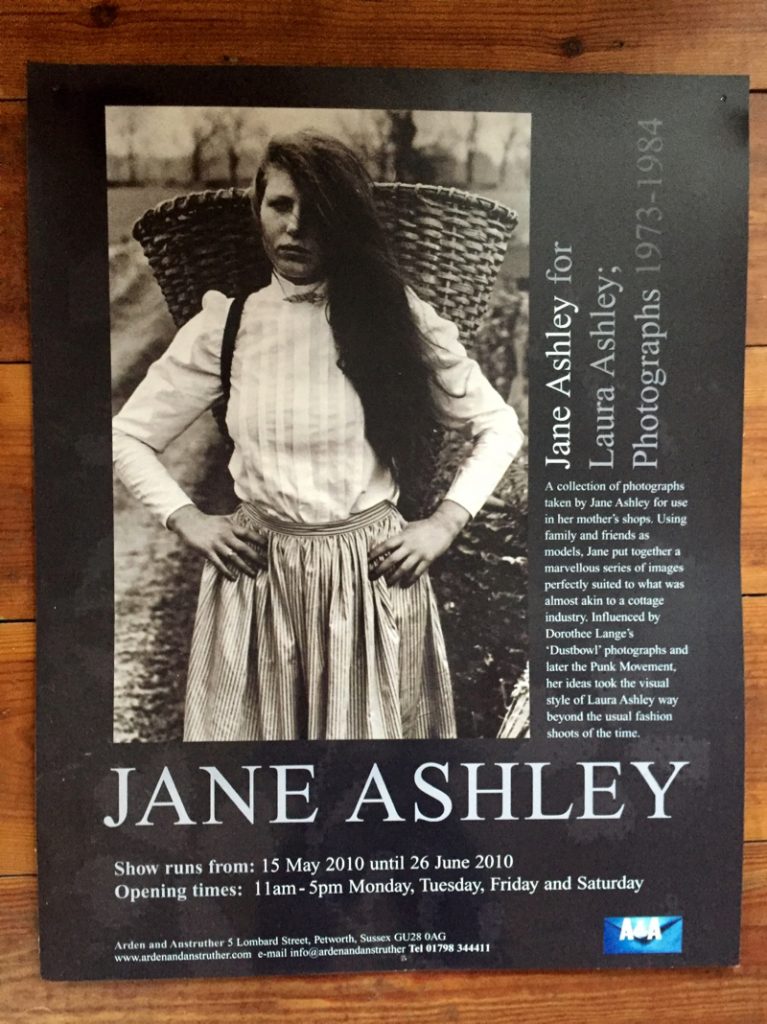
Laura Ashley had begun to print textiles in 1953 but her fashion label really took off in the 70s… A couple of years ago we all started wanting it again [this image copyright Jane Ashley for Laura Ashley]

In the 70s this young company was operating out of a small factory in Wales. Laura and her husband Bernard Ashley had tapped into the ‘can do’ spirit they found there, recruiting from the local people – Meirion Rowlands, a sheep shearer who started as a pattern cutter and Phil Morris and Brian Jones who became novice designers.
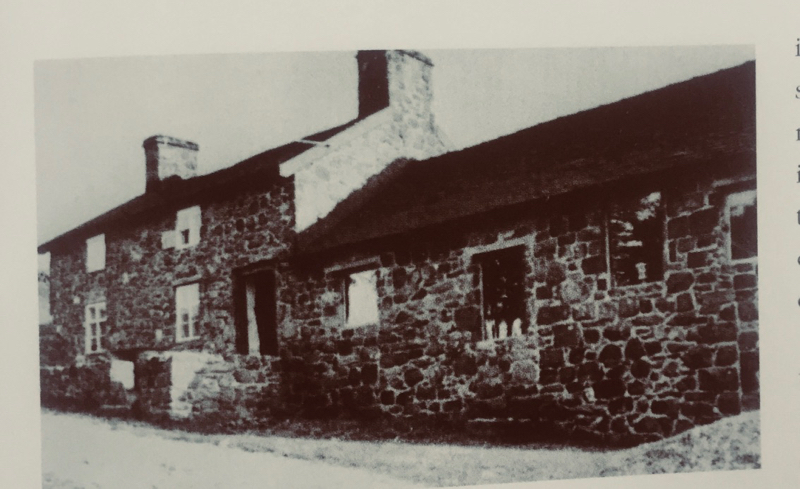
The Welsh longhouse that was the Ashley’s first family home near Carno.
Everyone helped with everything, loading the delivery vans with garments, then piling into the pub – the Aleppo Arms – at the end of a big production run. There were staff football matches with factory girls playing shop girls and the works canteen served healthy roasts and vegetables – Laura banned chips. ‘We respected them, they respected us. There was no us and them.’
The four Ashley children gradually took up key roles and responsibilities. Jane, the eldest, became the company fashion photographer, her brother Nick worked as design director; these are their stories.
IN GOOD COMPANY, 1977 – by JANE ASHLEY
The company my parents, Laura and Bernard Ashley first set up in 1954 was called Ashley Mountney – both their surnames, reflecting their equal contribution and talent in design and business. When we relocated to Montgomery and started the factory in Carno in 1962 – and the company became Laura Ashley Ltd – they were in very good company. The opportunities for employment there were few and the clever and creative local people who came to work for us put their heart and soul into it.
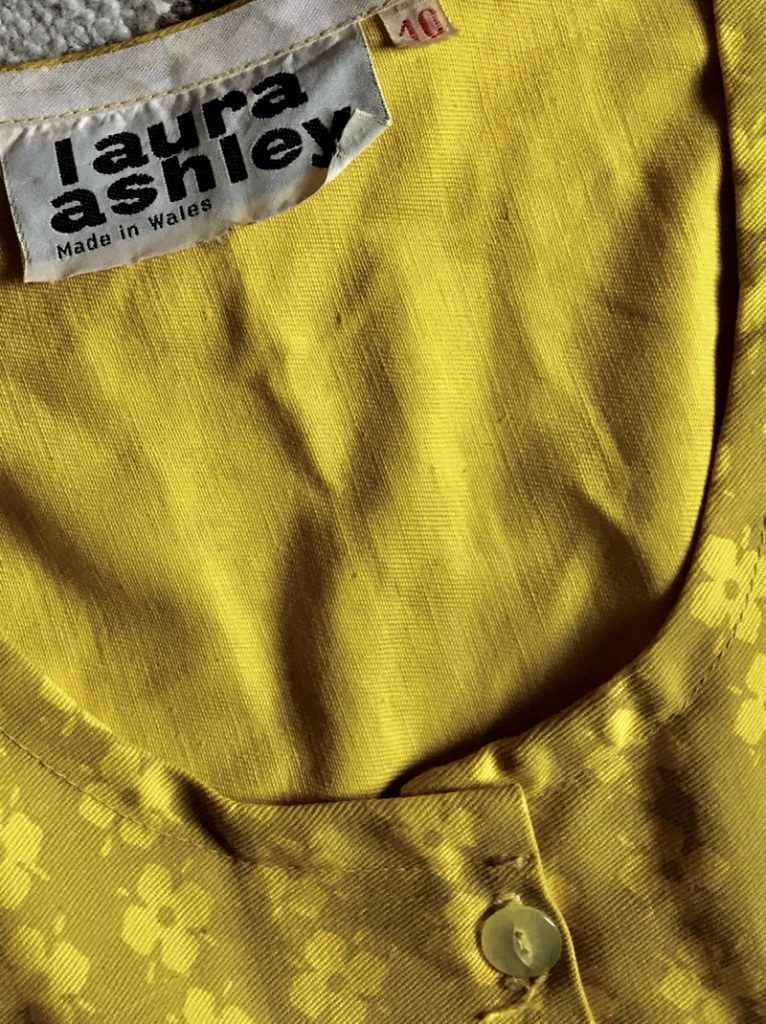
An early printed smock and the first Made in Wales brand label
I believe this ensured the company’s success. My parents built on this solid foundation and as the company grew those who worked in the shops and design studios were just as integral: in Wales, there was Meirion, Phil, Brian and Emlyn, in London, Lynda, Jaqui [Smale], Antonia,and Moira.
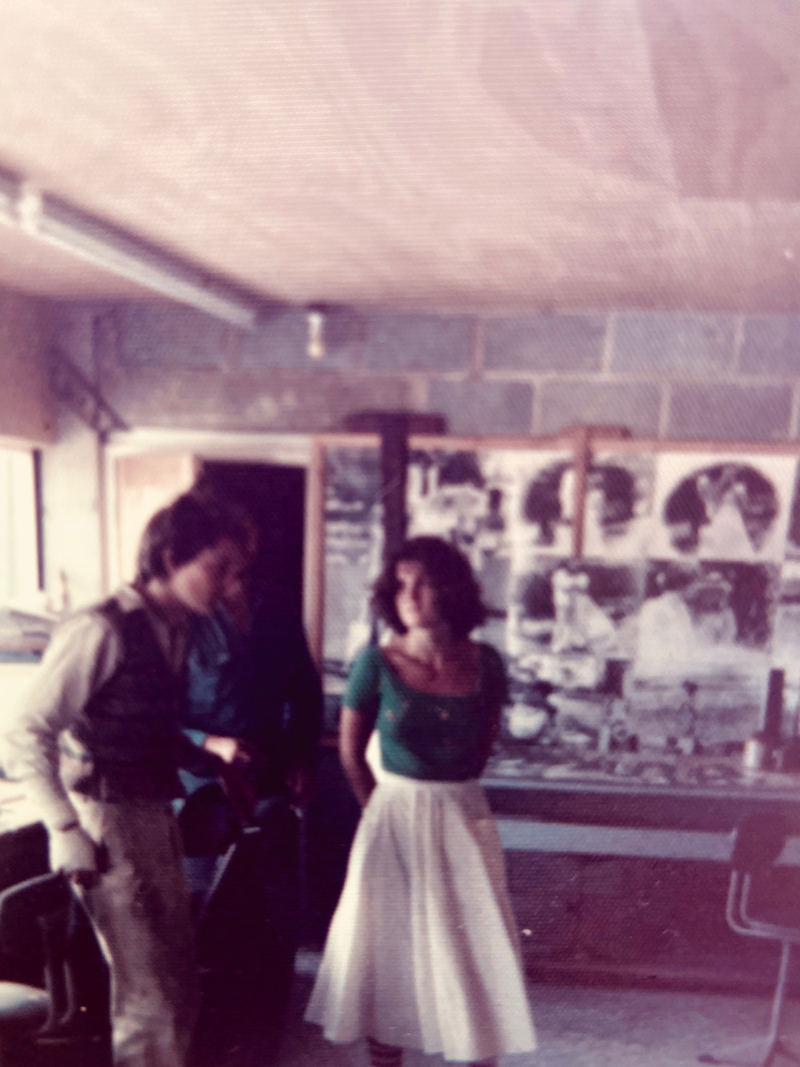
Nick and Jane Ashley at Carno studio, 1975

An original print for Jane Ashley’s fashion shoot endorsed by her father – ‘You are the best!’ [this image copyright Jane Ashley for Laura Ashley]
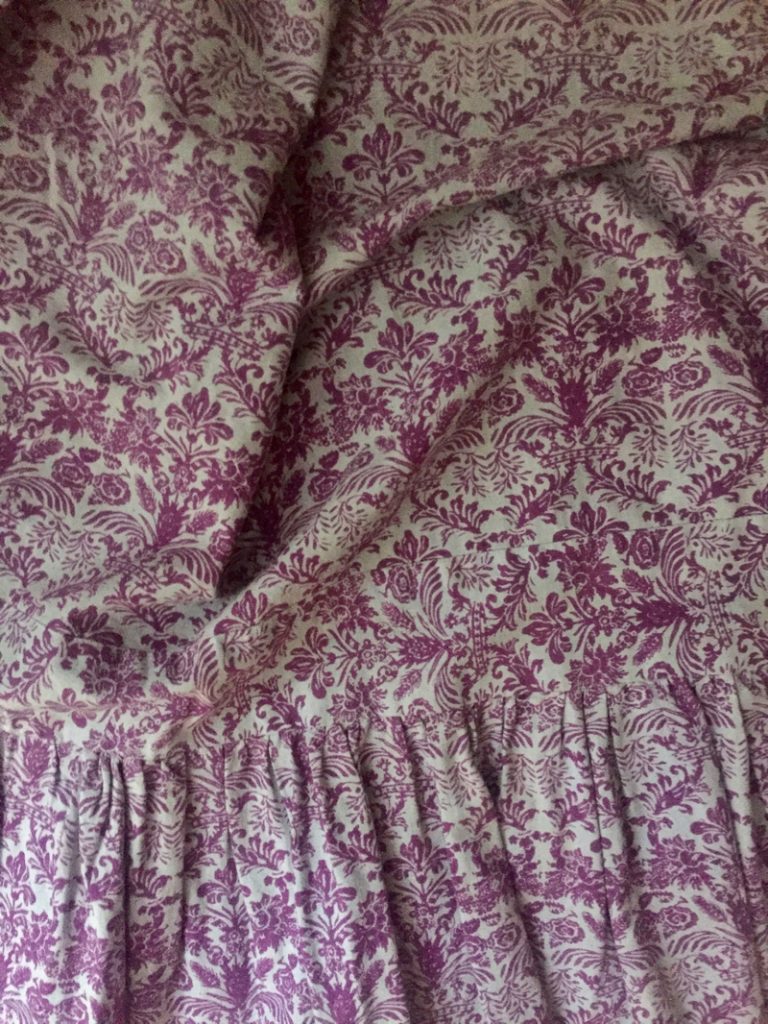
1970s cotton printed with a foliate pattern , made up into a maxi skirt, home made.
In 1973 my parents sold their Welsh longhouse near Carno and bought Rhydoldog, a country house half an hour’s drive south. It had many more rooms and so the wallpapers and home furnishings began.
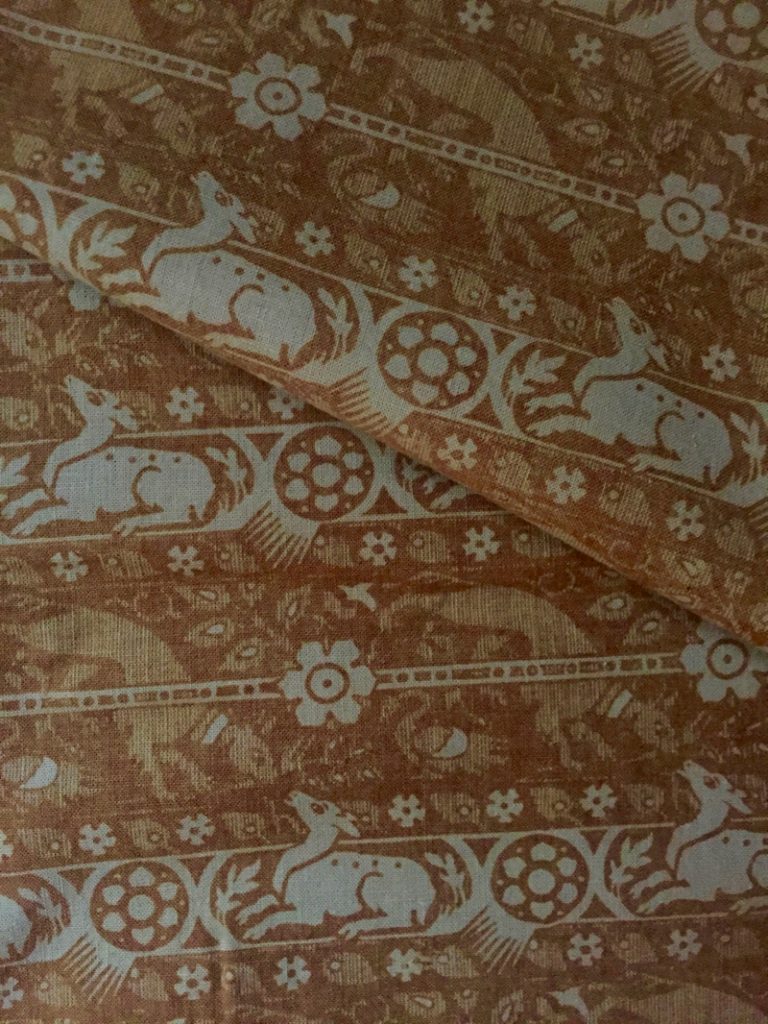
Furnishing fabric print from the early 1970s
The downside, as anyone knows who has built a business from scratch, is the stress my parents were under, mainly because the company hadn’t been financially secure up until then and they had always found it hard to get backing for their work. As children we were encouraged to contribute creatively and put forward our own ideas, sometimes we were caught in the crossfire and we learned to rise above it. There were some difficult, draining times, but as the company became successful the joy of the results of their hard work and creativity lifted us all up. This pot pouri of effort and shared purpose won us the Queens Award for Industry in 1977. How proud we were when it was presented in the factory canteen in Carno and we all ended the evening singing in the Aleppo Arms.

[this image copyright Jane Ashley for Laura Ashley]
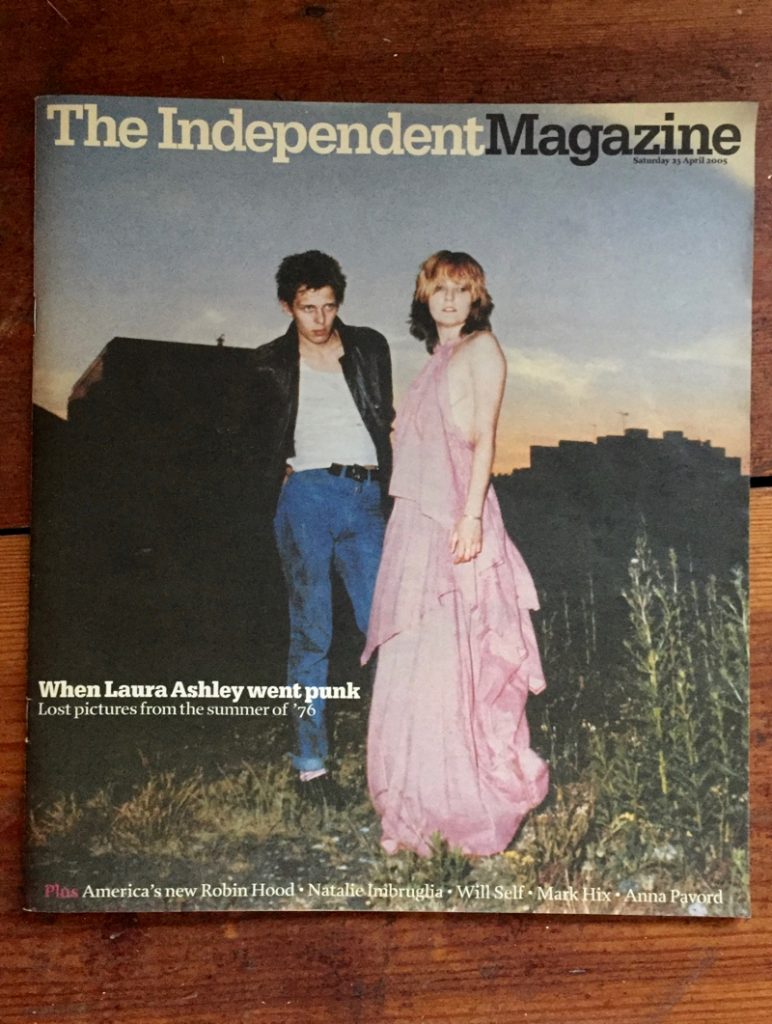
Decades later, Jane Ashley’s iconic, Punk image – featuring Viv Albertine, later of the Slits, modelling a three-tiered printed cotton halterneck dress, and Paul Simonon bassist with The Clash – made the front cover of The Independent’s Saturday supplement [this image copyright Jane Ashley for Laura Ashley].
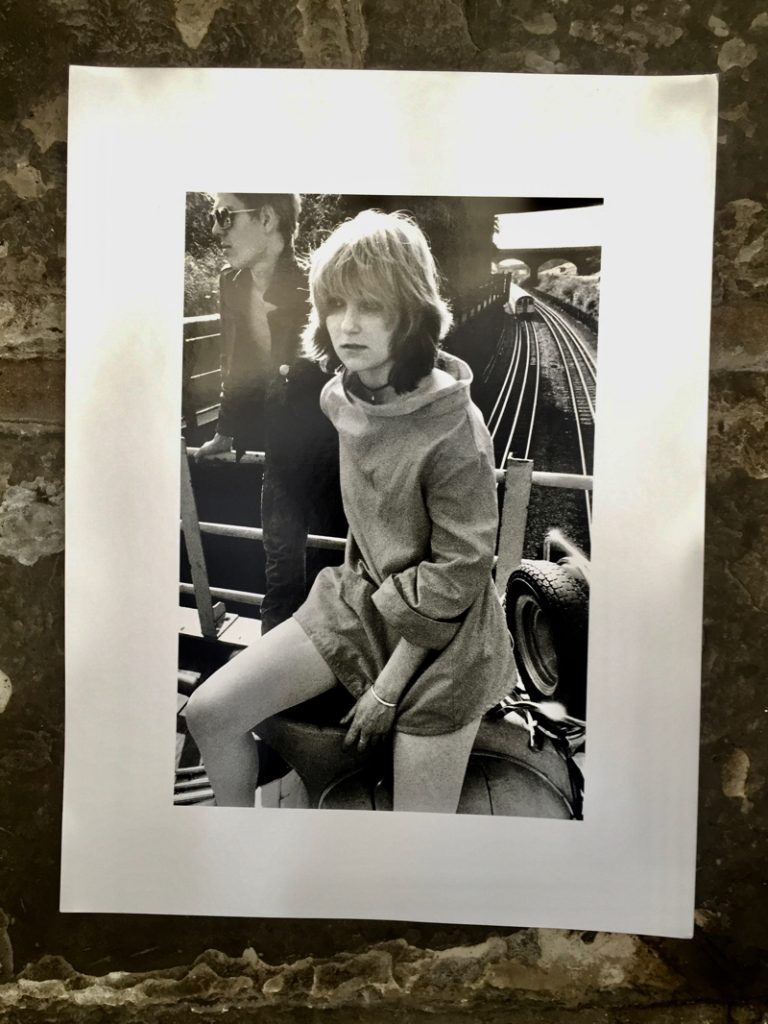
Viv Albertine (with Paul Simonon) modelling a late 1960s smock dress, mid 1970s. The design evolved from a 1959 gardening smock popular with Home Counties ladies that was later adopted and adapted as a sack dress for younger, groovier women. [this image copyright Jane Ashley for Laura Ashley]

Pre Raphaelite fashion shoot [this image copyright Jane Ashley for Laura Ashley]
Budgets were always tight or non existent in the early years and so I would use friends and family as models.
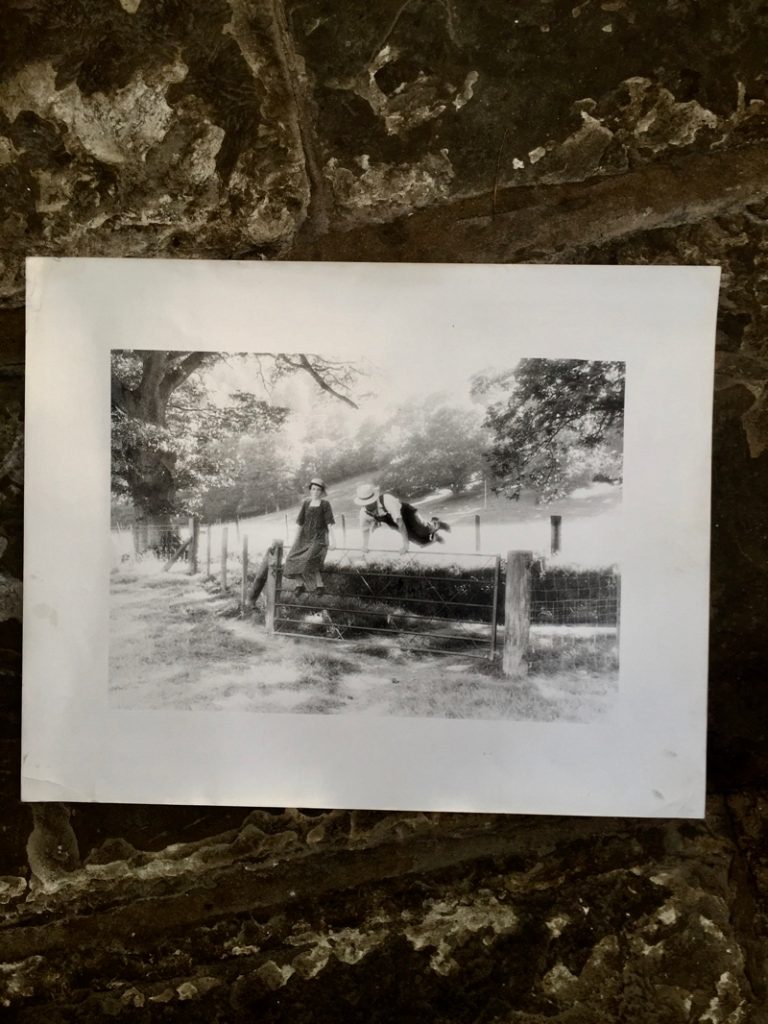
Fashion shoot, Lucy and Tim at Rhydoldog, 1976, [this image copyright Jane Ashley for Laura Ashley]
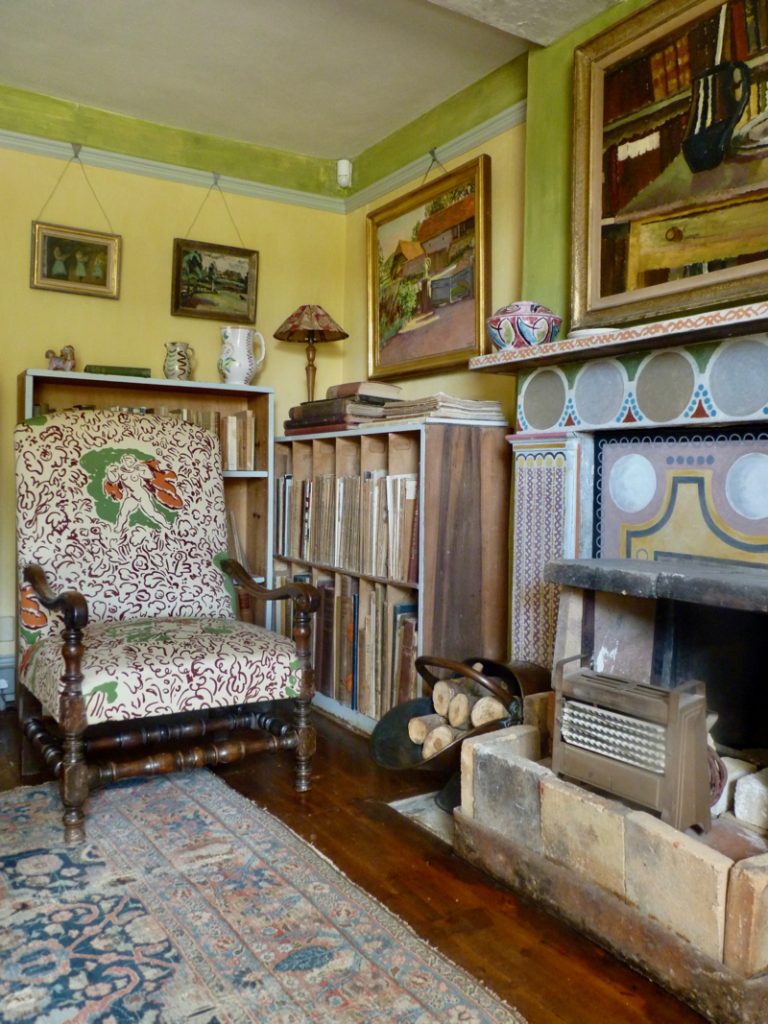
On the chair, West Wind, designed by Duncan Grant and reproduced by Laura Ashley, photographed in the Sussex house he shared with Vanessa Bell, Charleston Farmhouse. To get the colours right the hems of some of the curtains and loose covers were unpicked to find the unfaded original tones, which proved so garish that the fabrics were printed in half-way, compromise shades.
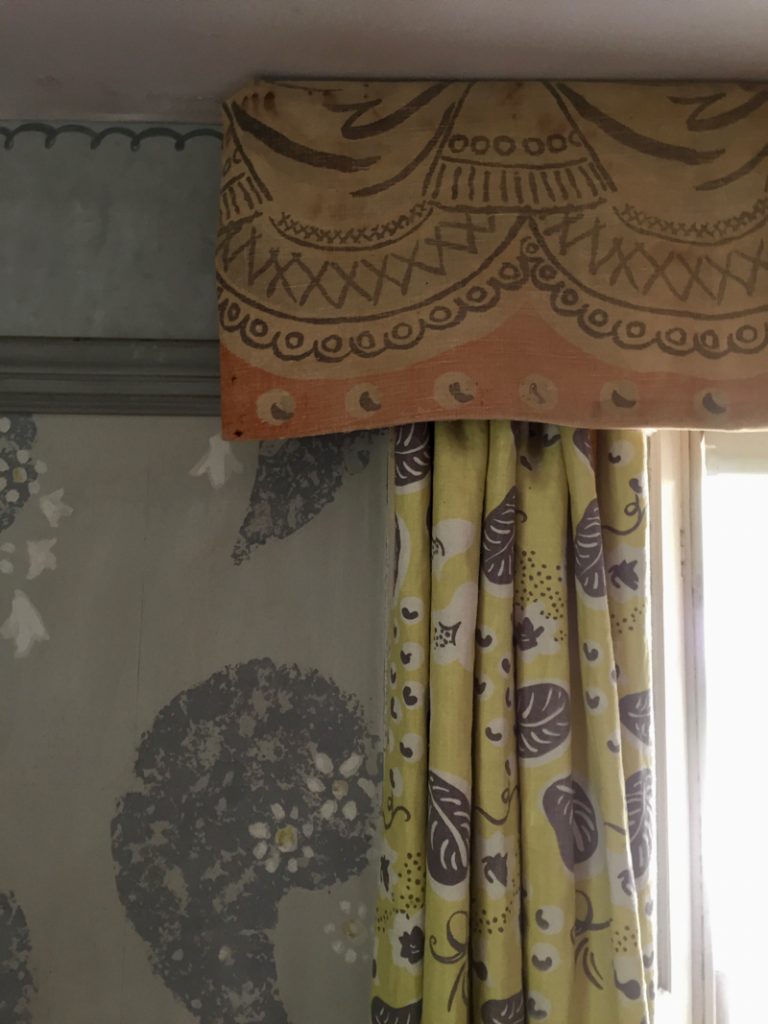
The Dining Room curtains at Charleston made by Vanessa Bell, in Duncan Grant’s Yellow Grapes design, reproduced by Laura Ashley ( and still for sale in the Charleston shop.)
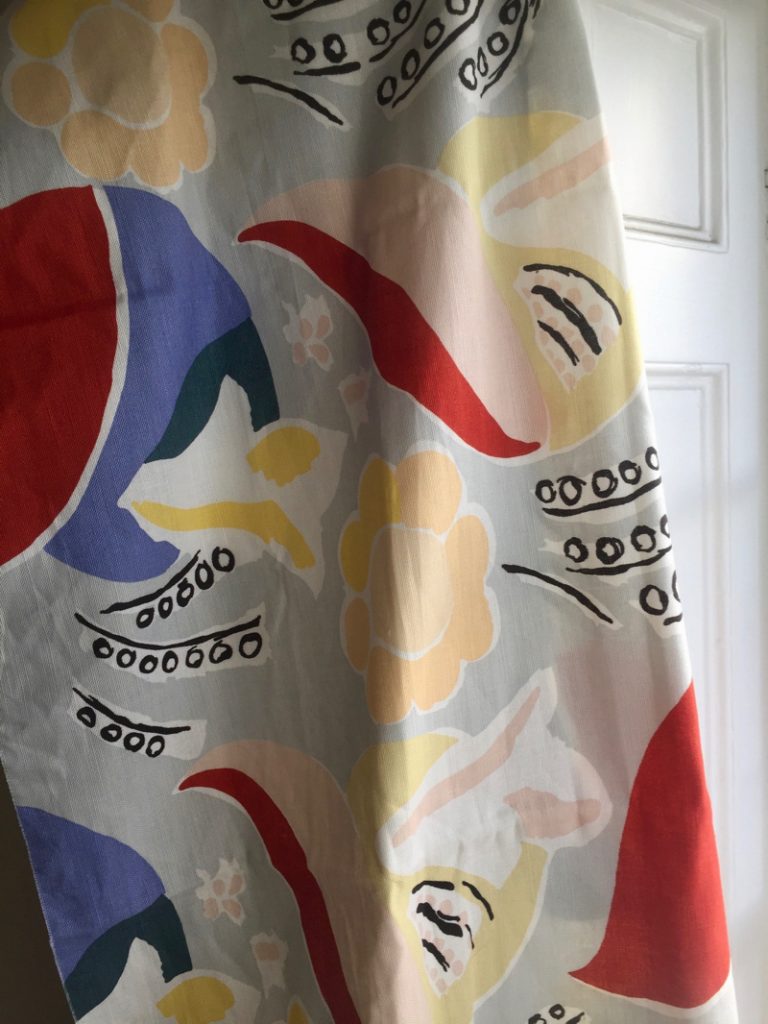
Queen Mary, designed by Duncan Grant and reproduced by Laura Ashley.
I was lucky to have grown up behind the scenes of a British brand. It was like being in the cockpit of Concorde as it took off. My parents never imagined they would have such success. One old friend from their younger days came to visit and said my mother seemed almost apologetic at the success of Laura Ashley!

Nick and Lucy, [this image copyright Jane Ashley for Laura Ashley]
So they were – literally – in good company.
Text by Jane Ashley, 2021. From 1995-2020 Jane Ashley ran The Ashley Family Foundation, the charitable foundation set up by the family after her mother Laura’s death in 1985, a role now taken on by her sister Emma Shuckburgh, her cousin and her son.

Jane Ashley’s photograph, publicity poster for the Norwich shop.
NICK ASHLEY, ON LAURA ASHLEY
At the end of WW2 my mother went to Italy and noticed a lot of young ladies wearing large bright printed cotton scarves, on the head, or as a wrap at the beach. She thought this was a nice way to cheer up the drab demob outfits back home.
On her return she set about printing some scarves of her own, her friends liked them and my father got roped into screen printing these scarves on the kitchen table, then hanging them up to dry all over the flat. My father took a suitcase full to Harrods, sold them , and by the time he had walked back to his flat ( it was not close but he could not afford the bus fare) the phone was ringing for some more.
They expanded into home products, oven gloves, aprons, tea towels, all fresh cotton with simple screen printed motifs in limited colours. This was the early Fifties and most of the shops were full of nylon clothes and bright primary colours, so the Ashley’s cottons and natural colours came as a fresh , slightly nostalgic reminder of a gentler past. My parents had no money at all at the time, but what little they had went into buying fabric, dyestuff and screens. They did not even “ waste” money on accommodation, as children, we were housed in two ex army “ pup” tents at a camp site by a river, we loved it, blissfully unaware that we were technically a homeless family.
For the next twenty years my mother designed, my father printed, my uncle helped with the printing, my grandmother helped with the sewing.
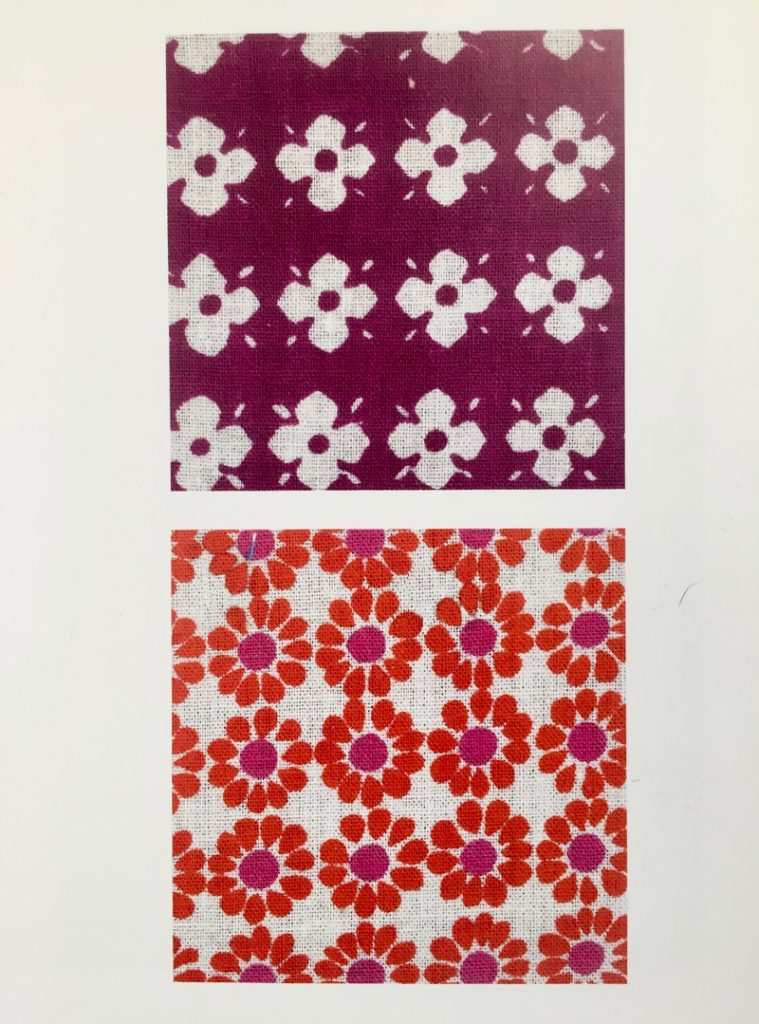
‘Daisy’ prints designed in the 1950s, Bernard Ashley was the colourist.

Yns Las, 1973: ‘This was shot on a local Welsh beach by my older sister Jane, we cast her friends as the models, they were an artist, an actress, a dancer and a photographer, with me making a cameo appearance in the flat cap second from left,’ [this image copyright Jane Ashley for Laura Ashley]
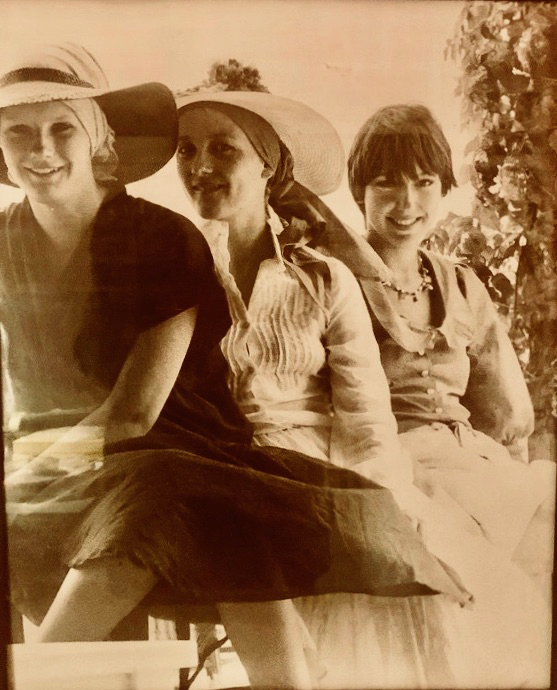
The designer Cath Kidston (far right) was one of the many among friends and family who modeled for the company, [this image copyright Jane Ashley for Laura Ashley ]
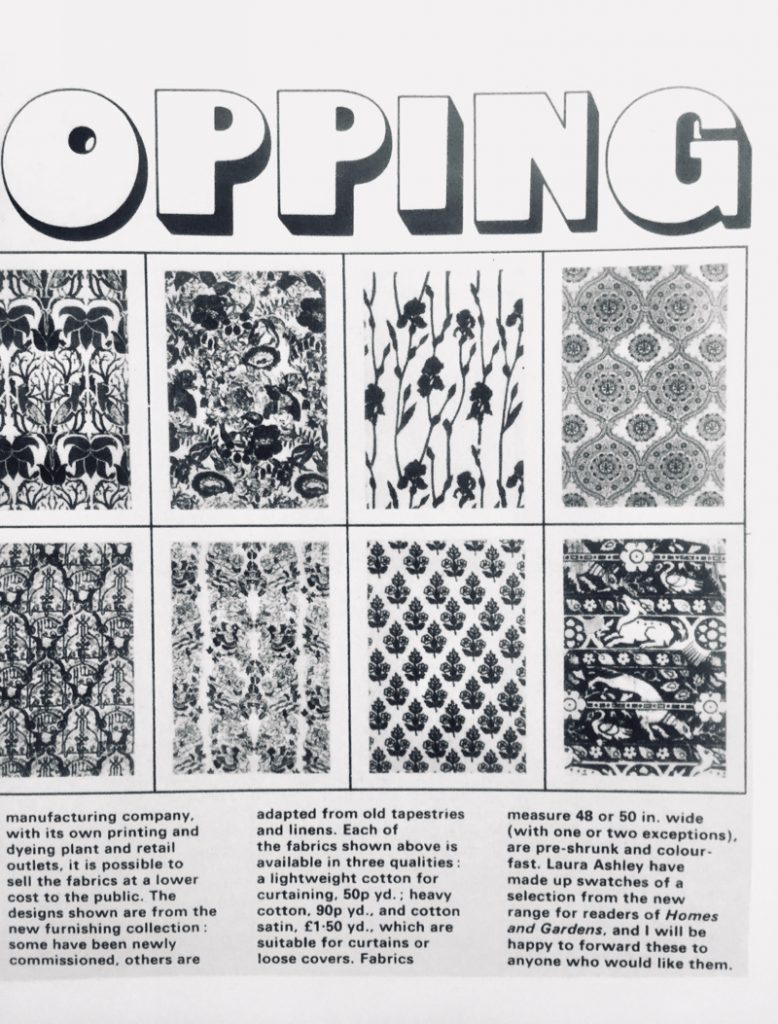
1972, a new range of furnishing fabric patterns, advertised in Homes and Gardens magazine, early supporters of their brand.
My father then realised that he was only one step away from designing,making, distributing and selling all under one roof, in other words, a vertically integrated company. This brought the prices right down, and the profits right up. No middlemen, this meant that the customer could manage to afford fabrics and clothes that were previously only available to wealthy people, now everyone could live like Royalty, and they did. On a global basis, we were opening shops and factories at a crazy rate: in one week we opened seven shops, then continued until we had five hundred worldwide. My older brother got press-ganged into expanding into the American market, this was a fabulously successful venture, my younger teenage sister contributed by designing a teenage collection for her and her pals, then her pals pals.

Detail of a 70s midi dress with a medievalising heraldic Griffin print
My mother’s design philosophy was very simple: more dash than cash. Everyone has style, she used to say, if exposed to nice things, it costs nothing to research, and most things can be home made… even for a castle.

Laura Ashley’s sketches for dresses and blouses, winter 1974.

Bath, the Museum of Costume: Laura Ashley used their archives and others to source some of her designs and copied garments dating from the late C18th and C19th, five of which were put into general production.
My mother was not interested in fashion or ephemeral things,she had a deep love of costume and dressing up, so when forced by the customers to make “fashion” she used costume designers and makers to put the collections together. The result was cotton ball gowns for five pounds each. Young girls were buying these by the armful for parties, events or just because the sun came out. The mothers then followed suit in the same styles made shorter for daywear. Everything on sale in our shops was printed and sewn in our thirteen factories in Wales, most of the sewing was done by women who until that point had not had much opportunity to earn an income, so it was very empowering for them to earn their own money and spend it on … anything they wanted.

Mid 80s, Welsh cottage kitchen styled by Ashley, before and after.
The massive expansion carried on until 1985 when my mother lost her life in an unfortunate accident, that was the end of it.
Nick Ashley, 2020.
Nick Ashley continued to work in fashion, with Dunhill, Tod’s and Private White V.C.

A deliberately rumpled room set created for the 1987 catalogue
POSTSCRIPT: BIBLE OF BRITISH TASTE WRITES –
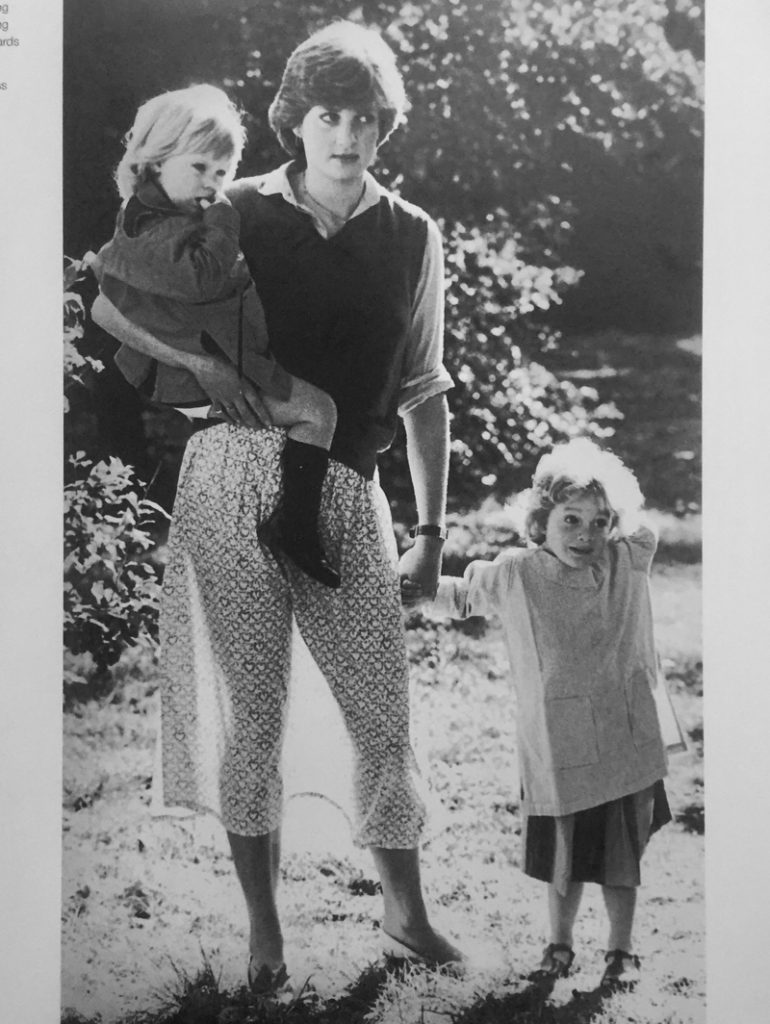
In the 70’s my big sisters ‘got’ Laura Ashley. They’re wearing it in our family photos of the time, one in a tie-front tobacco-coloured velvet smock, another in floor-length ruffled-bridal-white cotton. By the 80s, Sloane Rangers were customers. Princess Diana – then a nursery school nanny – was in diaphanous Ashley-sprigs for her famous press call and there were the beginnings of taffeta meringue ball gowns for dressing up. By the time I grew up the fashion brand’s moment was passing and I never wore it. But these clothes left their lasting impression.
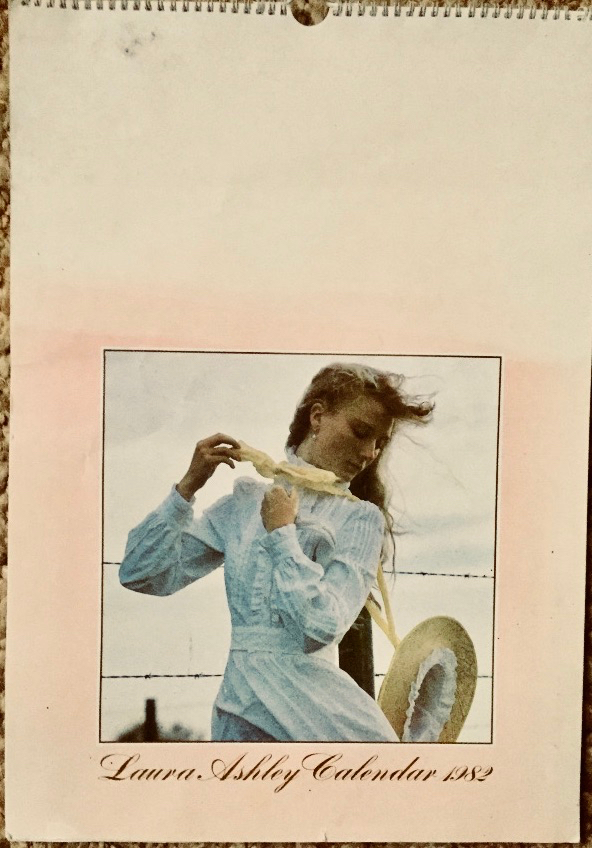
My friend Isabel Bannerman, garden designer, writer, beautiful model for all 12 months of the Laura Ashley calendar in 1982.I found it when I was staying with her and Julian at Trematon and became determined to feature Laura Ashley on the bibleofbritishtaste:
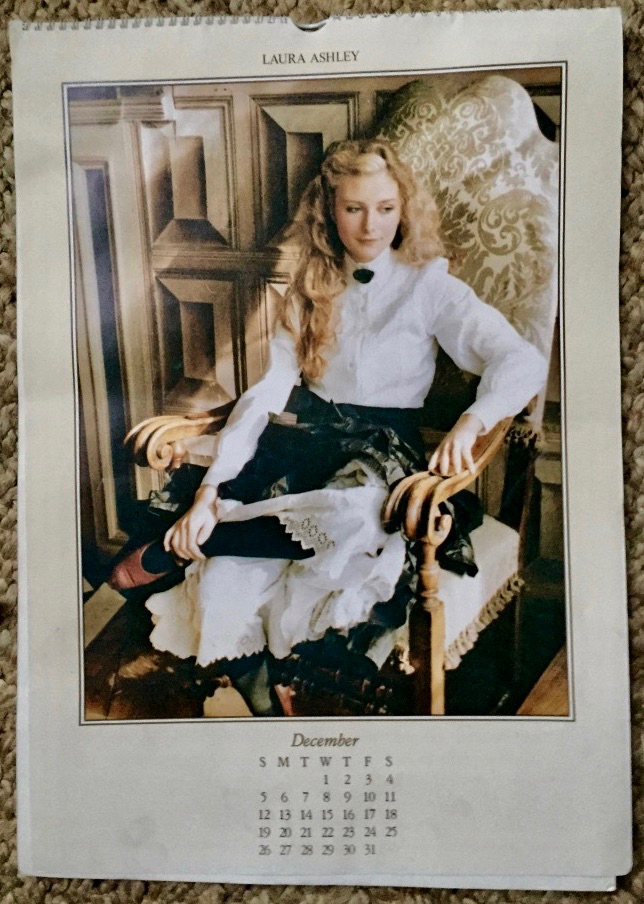
Isabel Bannerman, being December.

Isabel Bannerman, black silk moire ballgown from the Venetian Collection, 1982.

Laura Ashley – the brand expands in the early 80s but reassures its original , core customers
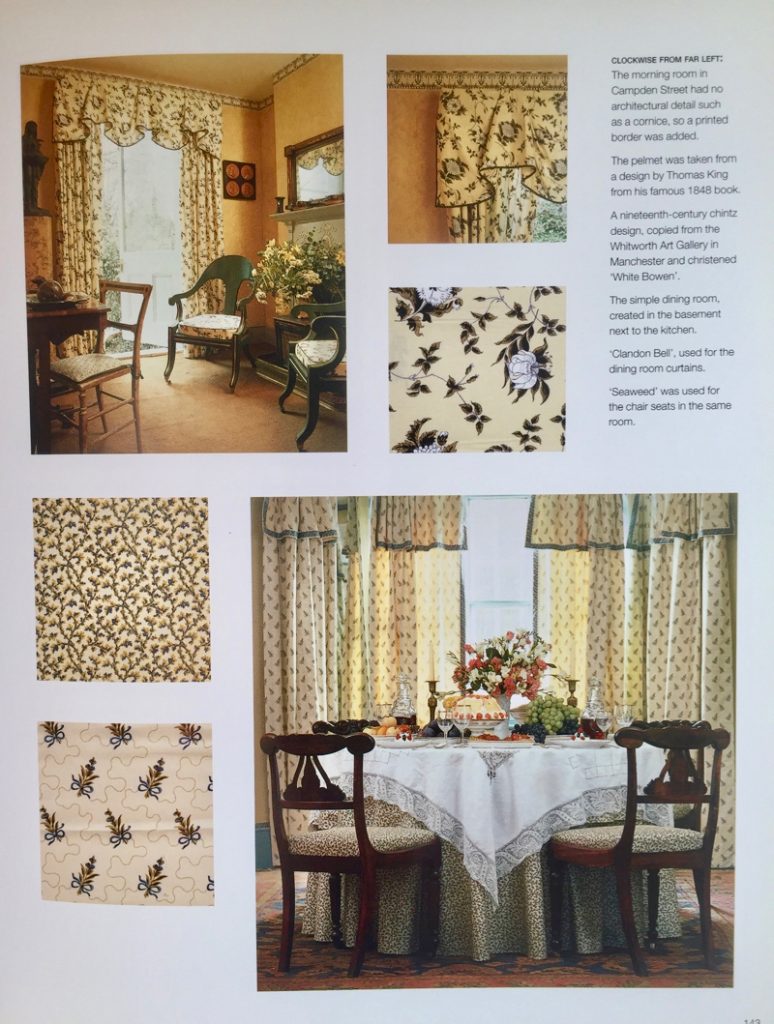
The showcase early 80s interiors designed for the Ashley’s town house , 23, Campden Street, Kensington, using C19th document chintz patterns.
The 90s rejected retro patterns and colour for modern Minimalism – when Tony Blair replaced John Major as Prime Minister the Daily Express headline was: “Downing Street chucks out its chintz”.
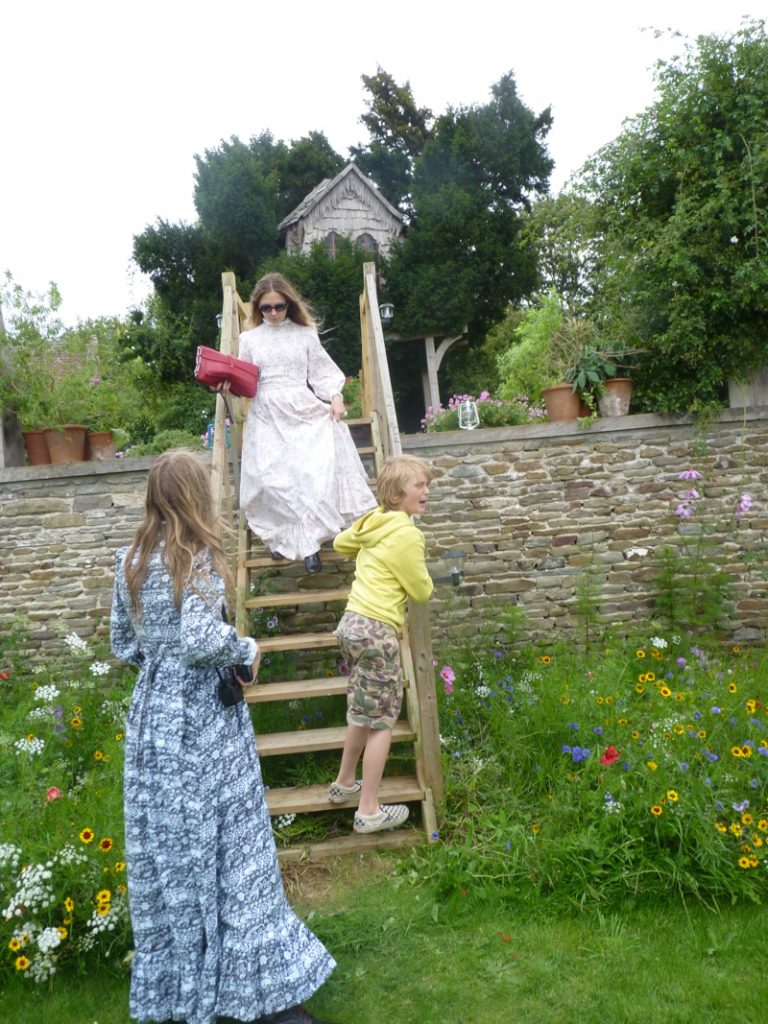
My photograph c.@bibleofbritishtaste, Laura Ashley’s descendants snapped at my friends the Bannermans’ farewell garden party at Hanham Court, the initial inspiration for this article on the bibleofbritishtaste.
But Laura Ashley was and still should be a BELOVED BRITISH BRAND ! Five or six years ago and slightly ahead of the curve I wrote about Ashley for a series in Country Life magazine called Great British Taste-Makers. Now ‘Cottage-core’ and the trade in vintage Ashley is flying and high fashion has been producing Ashley rip-offs for the past 18 months. My friend Zita trawls ebay for Ashley’s Colefax-chintzy curtains, which, she says, are still absurdly cheap.

GKMW in Solveig Stone’s vintage Laura Ashley cape c.1974, a very kind present
Chloe, Gucci, and Shrimps have all made Ashley look-alike ‘Prairie dresses” named for the children’s books about an American pioneering family by Laura Ingalls Wilder. The groovier young style their mother’s vintage Ashley as workwear; their mother’s friends suddenly get nostalgic for old frocks pushed to the back of wardrobes or bundled into the attic. My daughter has her aunties’ old Ashley and a fabulous mushroom-corduroy cape that she was given two summers ago by Solveig Stone (of Compton Marbling), who put her bridesmaids in Ashley for her wedding back then. The shoppers of the 70s and 80s craved Victoriana and we’re back there now – but with our consciousnesses raised – I hope.
Last year the 67-year-old brand was bought by an asset acquisition and investment company, Gordon Brothers, along with its archives and related intellectual property – the invaluable back catalogue of vintage Ashley and all the document textiles that Laura Ashley so diligently collected and used as her design sources, including hundreds of antique quilts, amazing pieces of folk art from the 19th and 20th centuries whose individual scraps she mined for pattern repeats.
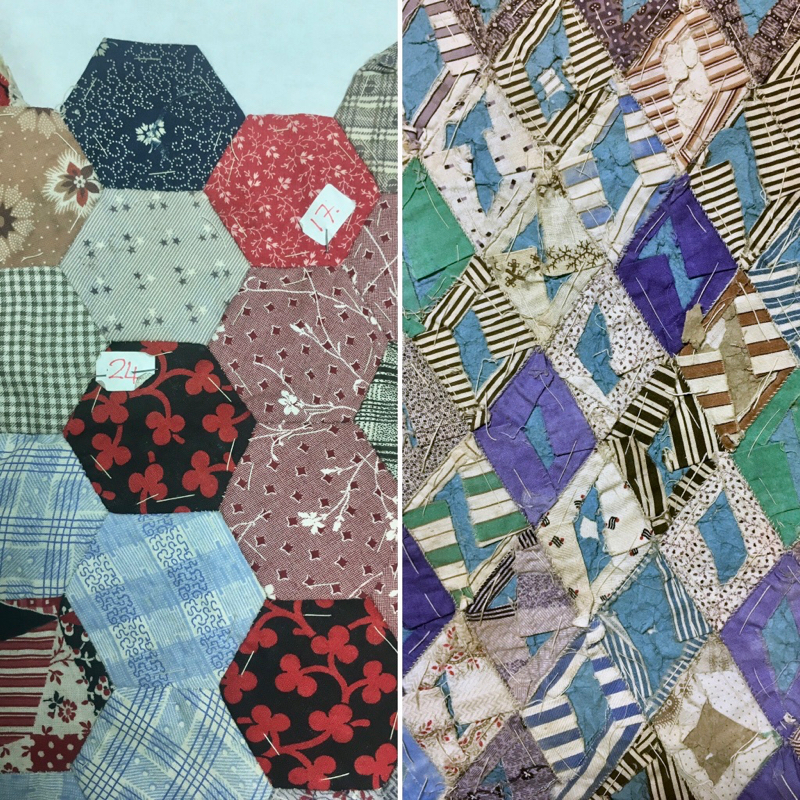
Victorian patchwork quilts from the Laura Ashley archive.
The British multinational Next has been awarded the deal to relaunch the Ashley brand and a flagship store in the Westfield Centre is planned. Which sounds so ‘2020’ and counter-intuitive now? If Laura Ashley were instead resuscitated as a company practicing its founder’s thrifty values, recycling and reworking its classic designs and patterns sustainably in British workshops, I think that would be a really good news story. But I don’t think it will happen.
With very grateful thanks to Jane Ashley, Nick Ashley, Cath Kidston, Isabel Bannermen and, Martin Wood author of the excellent survey and source book, Laura Ashley, ( Frances Lincoln 2009).

I’m eternally grateful that you’ve written this article. One of my worst childhood memories was walking into a room full of Laura Ashley dresses. My mother and I were invited to a lunch at her bosses house. We didn’t have a lot materially. I was wearing a dress that my mother had made me because that is what we could afford. The mothers and daughters were all dressed in matching Laura Ashley dresses and were cruel. Nellie Olsens for sure. My mother was so uncomfortable, we left early, tried to laugh it off. That moment had a lasting impression on me. It opened my eyes to class and cruelty for the first time. All these years later, it was a delightful and healing to read about handmade dresses and the Welsh countryside. Empowering women of all talents and backgrounds. How amazing would it be to bring it full circle and back to the makers here in the U.K. Many thanks, MB
An interesting article. I loved my Laura Ashley bed set, purchased in the early 1980’s at The Bay hear in Ottawa, Canada. It was cream an mauve floral, I wish it was still available.
I wore Laura Ashley for my “going away” dress when we were married 43 years ago. I still have and use a tissue box cover. I wish I still had a blue print lampshade. I did a dining room and upstairs hall in Laura Ashley wallpaper. That hallway still remains a perfect moment in my mind. I worked hard to be able to afford these things but you’re right when you say they were affordable. Lampshades like that now- well, they don’t exist but if they did either the quality would be poor or they wouldn’t be affordable. Laura Ashley did original , or adaptive, designs that were timeless and affordable with effort and I’m so glad they’re back- for my generation and others.
I first came across Laura Ashley as a v young child whilst on holiday in Wales . We made a special trip to the shop in Machyllineth and my sisters and I were bought little pinafore dresses it must have been about 1966 . I think we had fish and chips too . Then later in the early 1970s we had midi and Maxi dresses made with fabric bought from the shop in Sloane Street where they also sold bags of squares of cloth for patchwork but we used to make dolls dresses . Then 1976/7 I discovered punk and went to Art School in the late 70s and 80s by which time it was for the Sloaney girls . I recently saw a fabulous young woman wearing one of the milkmaid dresses with a blue Griffin print outside a vintage shop in Hackney . I knew all those 70s prints so well . It was a last hurrah for home made dresses. Everyone wore it and we were not posh !
My favourite dress from my teenage years was a halter neck maxi dress that i bought in 1974 with the “earnings “ from 10 A’s in my O-levels. I loved that dress and wish I still owned it , and could fit into it… Laura Ashley was part of my life – bed linen from 1985 is still going strong in our holiday house in Cornwall. Thanks to the Ashley’s for all that design excellence.
My sisters worked at Laura Ashley and Laura Ashley Mother and Child at Saddle Creek in Memphis, TN between ‘88 and ‘91. I would stay up well past midnight as an eleven and twelve year old scouring the home furnishings catalogues dreaming of being able to afford fabrics to mix and match. Flash forward to 2020 and I became very nostalgic. I have papered my bedroom, study, hallway, and bathroom in vintage Laura Ashley. Have collected all of the 80’s home furnishings catalogs and some of the 90’s ones. I am patchworking with Laura Ashley fabric currently and have bought a fair amount of vintage fabric which is or has been sewn into various projects. And the bedding! I get to play decorator with all of the bed linens I have acquired! Truly a dream come true.
Wonderful article which brought back many memories. I used to make copies of the Laura Ashley dresses with fabric I’d find in local markets in north Wales, stoke on Trent & the Wirral. I finally bought a beautiful blouse 1974 from the Shrewsbury shop – it would still look great today. Laura Ashley fabric and wallpaper were later used in our home, mashed up with habitat & second hand family furniture.
What a fantastic article and so interesting to learn about the history of the brand. I was one of three girls and we all wore Aurel Lashley (as the baby sis called it) frocks to parties in the 70s. I still remember the prettiness and simplicity of those clothes.
Just finished the article and I am now going into the store under the eaves to find the Laura Ashley black cotton maxi dress that I so loved and still do. No sprigs of flowers just plain black. I wore it with a silver buckled black velvet belt and I had so many favourable comments when I wore it. Couldn’t get into now but I have an 18 yrs old grand-daughter who loves it so it looks like it will live on !!
I was bought up on Laura Ashley! The walls of our house were papered in its little sprigs and we were dressed in it….matching walls and dresses such a strange concept now….,my first ball gown was from Laura Ashley and my first Saturday job was in their Victor Hugo shop in Paris….absolutely HATE what they make now……hideous high streety rubbish……let’s start again.
Bravo! I so agree – the heritage brand needs to come back to the front page.
Oh how simple and lovely it all was, and no need to read the label with care, all 100% cotton that got lovelier with washing. And at a time in rural Shropshire/Montgomeryshire when everything seemed made of horrid purple nylon. I remember when their tiny shop opened in Shrewsbury and it was like a breath of fresh, clear air. Their factory was also very good at giving away rolls of seconds fabric to play groups, YFCs etc. Happy days and how good to read about the early times. I would love to think current hardships might encourage similar enterprises but I doubt it will.
Your concluding comments about the future of the brand exactly the thoughts of my bestie and I. We have lost an invaluable reference resource, we no longer have fabric designers at the lower end of the market, companies are still copying the final days of Laura Ashley 2.5 years later, as they have not invested in designers and the return to the original vision – without all the fripperies, such as candles, scents and kitchens – would return the brand to a force to be reckoned with. I do not believe that middle aged American men can have the faintest idea what to do with their acquisition, let alone have the understanding for roots that were established before they were born.
I have and wore the white cotton blouse in the advert for 1982 catalogue. I thought I was the bees knees in it! I used to wear it with jeans as a teenager! Numerous wallpaper rolls and duvet sets as well once married.. memorably Lyme Regis stripe in yellow..statement wall in the paper, border round the picture rail and duvet and pillows to match… a newlyweds bedroom…those were the days.. hard earned, but thoroughly enjoyed.. bring it back! And what a great article!